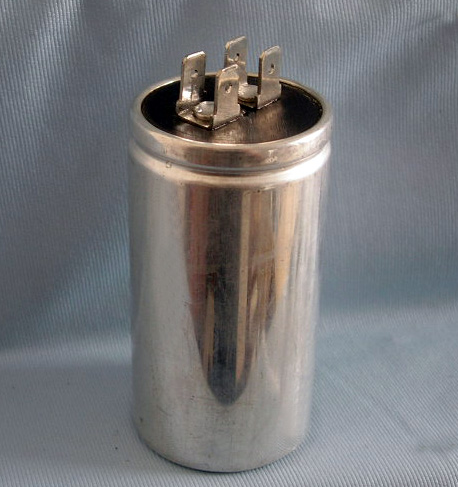AC capacitor discharge refers to the process in which a capacitor releases its stored electrical energy in an alternating current (AC) circuit. Capacitors store electrical charge, and this physical property means that even after the circuit is disconnected, the capacitor may still retain dangerous residual charge, posing a risk of electric shock.In an AC circuit, capacitors are in a state of periodic charging and discharging due to the cyclical changes in AC current and voltage. The capacitor continuously charges and discharges in response to the fluctuations of the AC signal. This changing AC signal means that when the power supply is disconnected, the charge inside the capacitor does not immediately disappear; instead, it remains for a period of time. The charge within the AC capacitor takes time to gradually decay to zero, which increases the risk of electric shock. Therefore, for safety reasons, it is crucial to understand how to discharge AC capacitors properly.
This article will introduce you to how to discharge AC capacitors.
Safety Measures for Discharging AC Capacitors
Safety measures before discharging an AC capacitor are essential because the release of charge within the capacitor may cause fire, electric shock, and other safety hazards. Therefore a series of safety measures need to be taken before discharging to ensure the safety of personnel and equipment.
Step 1 Turn off the power and disconnect the power plug
Before discharging ac capacitor, the power supply must be disconnected to prevent damage to personnel and equipment from high voltage charges.
Step 2 Use insulated gloves and safety glasses
Before discharging the capacitor, wear safety equipment such as insulated gloves and eyeglasses to avoid personal injury caused by sparks, explosions and other harmful substances.
Step 3 Check the capacitor status
Before discharging the capacitor, check the capacitor condition, such as whether there are cracks and deformation on the surface of the capacitor, whether the capacitor leads are intact, whether the connection is loose, and whether the insulation of the capacitor is damaged. Make sure the capacitor is not damaged or malfunctioned, otherwise it will cause accident during the discharge process.

How to Safely Discharge an AC Capacitor?
You can use a multimeter to help you discharge the AC capacitor. Multimeter is used to check the voltage stored in the capacitor so that a discharge can be performed using the proper resistive material. To use the multimeter, simply turn it to the voltage reading and continue to check the voltage of the capacitor.
The basic process of discharging a AC capacitor is summarized in the following steps:
Step1 Completely disconnect the power to the capacitor to ensure your safety.
Step2 Use a volt/ohm meter or multimeter to determine the amount of voltage stored in the capacitor. Make sure to get the exact number of volts.
Step3 If the voltage is relatively low (under 50V), then you can use an insulated screwdriver to release that voltage. Alternatively, use an appropriate resistor receiver that can handle that voltage. (NOTE: If the storage voltage of the capacitor is higher than 50V, avoid using a screwdriver to discharge the capacitor as this may cause harm to the capacitor, the screwdriver or even the user.)
Step4 Hold the capacitor firmly. Make sure your hands are protected from the terminals to avoid electric shock. The resistor receiver (screwdriver, light bulb) must touch both terminals of the capacitor at the same time.
Step 5 Test the capacitor again and repeat the process as required if there is still voltage.
How long does it take for a capacitor to discharge? Under normal circumstances, the discharge time of a capacitor is 3 minutes. That is to say, the capacitor should not be put back into operation within 3 minutes after it stops working, otherwise, it will close with a charge, which can easily cause a capacitor explosion accident.
What tools can be used to discharge AC capacitor?
Choose an insulated screwdriver or insulated pliers of the right size
Electrically charged capacitors can be very dangerous, so be sure to always avoid touching the terminals. Never touch any part of the capacitor except the sides of your body. If you touch the two posts, or accidentally connect them with a tool, you could receive a severe electric shock or burn. Therefore, choosing an insulated screwdriver or insulated pliers is essential. Insulated screwdrivers usually have rubber or plastic handles, which will create a barrier between your hand and the metal part of the screwdriver itself. If you don't have an insulated screwdriver, purchase one that clearly states on the packaging that it is insulated. Many will even tell you the voltage rating at which they are insulated.
Be careful not to use a screwdriver with a torn, cracked, or broken rubber or plastic handle. This damage may allow current to pass upward into your hand when the capacitor is discharged.
Use Discharge Resistor to discharge AC capacitor
Using a discharge resistor is another method to discharge a capacitor besides using an insulated screwdriver. By connecting an appropriate discharge resistor across the terminals of the capacitor, the stored energy can be gradually released after the power supply is disconnected, achieving the purpose of discharging. It is important to note that the rated power of the resistor must be greater than 2.5W, and high-power resistors like this are usually quite expensive.
Why Discharge AC Capacitor?
As mentioned earlier, capacitors have the ability to store electrical charge, which means they can retain dangerous charge even after the power supply is disconnected. Discharging a capacitor involves releasing the stored charge within it. There are two main reasons for discharging a capacitor: to prevent electric shock accidents and to protect the capacitor and the circuit.
- Preventing Electric Shock Accidents: Capacitors can retain charge even after the power supply is turned off. If someone mistakenly believes that the capacitor is harmless after disconnection and touches its terminals, they may experience mild tingling or burns, or worse, suffer an electric shock, which could even lead to a fire. Large capacitors can store enough energy to cause injury, so proper discharge is essential.
- Protecting the Capacitor and Circuit: A charged capacitor retains accumulated voltage and current at its terminals when disconnected, which can lead to short circuits and damage to circuit components. The larger the capacitance and voltage of the capacitor, the greater the potential for damage. Therefore, it is crucial to discharge the capacitor before disconnecting it to eliminate all stored charge and voltage, ensuring safety and protecting the equipment.
Conclusion
In summary, a capacitor is an electronic component that stores energy. For safety and equipment protection, it is essential to discharge the capacitor before use. This article has introduced the steps for safely discharging AC capacitors, as well as the tools that can be used. Therefore, it is important to strictly observe the operation specification when performing capacitor discharge operation and never be impatient to ensure the safety of personnel and equipment.






